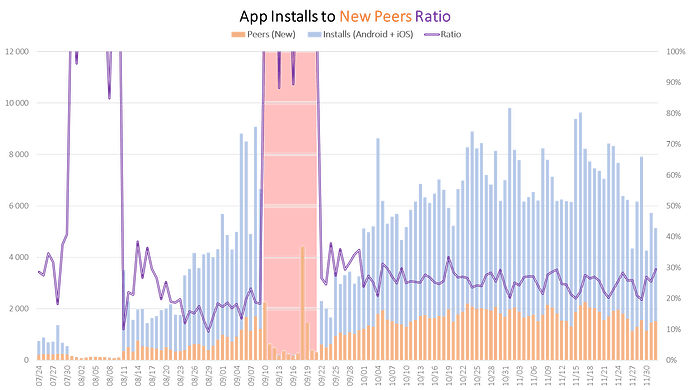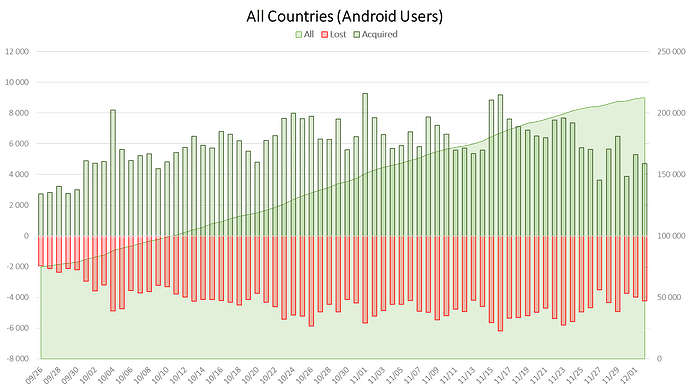Half the money I spend on advertising is wasted; the trouble is I don’t know which half. - John Wanamaker
Some say that nowadays even more than 50% of the advertising spend is wasted. Is that the case with Status? I don’t think so. I would say we are relatively frugal and all our paid efforts seem to be very cost-effective… but there are still some challenges we need to overcome. One of these challenges was the inspiration for this thread.
Anyone attending our bi-weekly Metrics Review meeting (every other Friday) has seen me presenting charts like this one:
What it shows is: volume of New Peers (orange/bottom column) in proportion (purple double-line) to the volume of Mobile App Installs (the whole column - the top part of it represents App Installs that did not manifest as New Peers).
(Red area is when the Spam Attack happened)
What does it mean? It means that (in the last 30 days), every day, only about 25% of the new Mobile App Installs manifested as New Peers . It means that we “lose” up to 75% of potential New Users … every day.
How? We don’t actually know (although we could!). Some of them install the app, but never open it - that’s fine, it happens. Some open the app and go into the on-boarding process. Many don’t get through. How many? Where (what step) is the highest drop-off?
We don’t know… but I think we could. I think we could get that data for 100% of our users, anonymously => without even asking for their consent.
How?
Temporary (Analytics) Account
What if we sent requests (or even messages to data-gathering peer) during the on-boarding process using a temporary account (created upon the very first app launch + with random password + deleted/replaced with an account acctually created by the user in the onboarding process).
With messages sent for the 1st/2nd/3rd on-boarding step - we could easily calculate % of New Peers at each step => drop-off for each step => we would know where to start on-boarding optimization.
There should be no privacy concerns: such an account would be temporary (and deleted) = not tied in any way to the device or the user…
…which should allow us to gather data for every user (no risk of gathering data only for biased user segments with need for opt-in).
It would enable us to proper on-boarding A/B Testing… and grow even faster:

